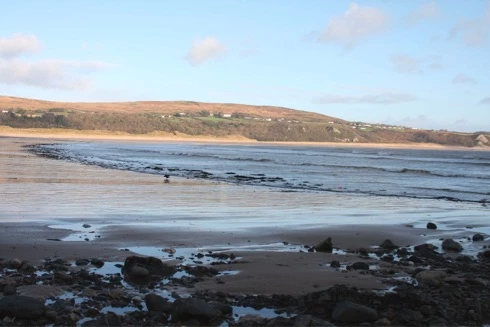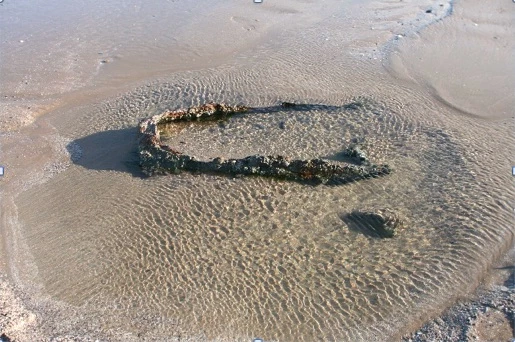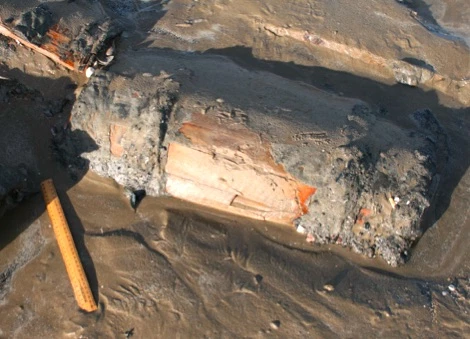Look what the tide uncovered
, 7 May 2020
On a Monday morning in January 2016 I received a phone call from the Museum’s archaeology department in Cardiff. It turned out that the storm a few days earlier had shifted the sand in Oxwich Bay on the Gower. Apparently a wreck had been uncovered and some old wooden casks were visible!
Because National Waterfront Museum in Swansea is the home of our Maritime Collection, I was asked to take a look and grab a few images before the sand covered it up again. As curator I’m part of the National Museum’s History & Archaeology Department, and I studied archaeology at Trinity College Carmarthen so I was well up to the task. Now, as much as I love a field trip, it was January and a cold wind was blowing from the Atlantic, but the weather in two days’ time was supposed to be fine. I hunted for my wellies (found in the boot of the car eventually) and charged my camera batteries.
So Wednesday morning bright and early found me in the car park for Oxwich Bay. Time was on my side, as at nine o’clock the tide was out as far as it would go that day. I had vague directions to follow as to where on the beach the barrels had been found – a very crude ‘X marks the spot’ hand drawn map. There was no scale on the map so I started at the western end of the beach and worked my way across it, zig-zagging to check out every little bump in the sand.
There were a lot of bumps too! Many pieces of metal, plainly from ships that had ended up there. Bits of steel rope, hull plating and rusty conglomerates. It was a lovely day for the search even though a keen wind was
Barrel exposed on the beach
blowing from the north now making the tops of the breakers misty. Then in the distance I spotted a larger disturbance in the sand and I could make out barrel shapes. There appeared to be six barrels and pieces of broken barrels, none of them were intact. They were lovely wooden casks and we had all hoped that they might be at least a few hundred years old. Alas, their proximity to a piece of steel hull spoke of a more recent wreck. Throughout the Twentieth Century, during WW2 and just after, a number of ships ended up on Oxwich Beach. Some were re-floated but others were broken up for scrap.
With such scant evidence it was impossible to tell which our ship was. The barrels contained a hard concrete-like substance, which later proved to be lime - originally a powder, it hard set hard in the sea water. Lime is used for a number of things such as making cement or lime mortar; as a soil improver just spread on the land, and for marking white lines on football pitches!
Wooden barrel containing hardened lime revealed by winter storms at Oxwich Bay
Are the barrels still visible? I don’t know. The power of the sea shifts the sand about after every storm revealing and then hiding historic treasures away maybe for another seventy years, maybe never to be seen again….



Comments - (3)